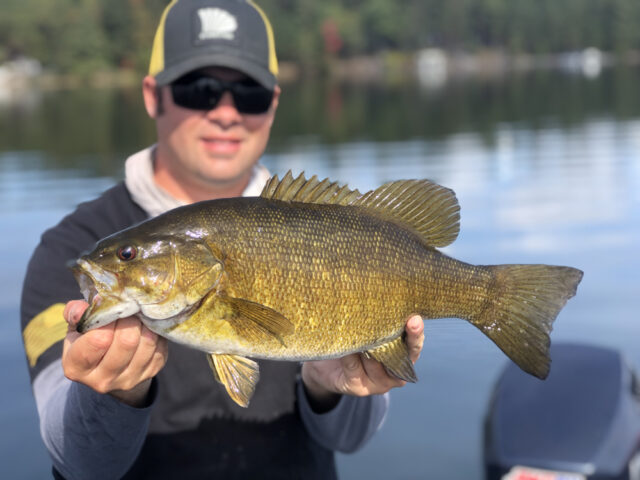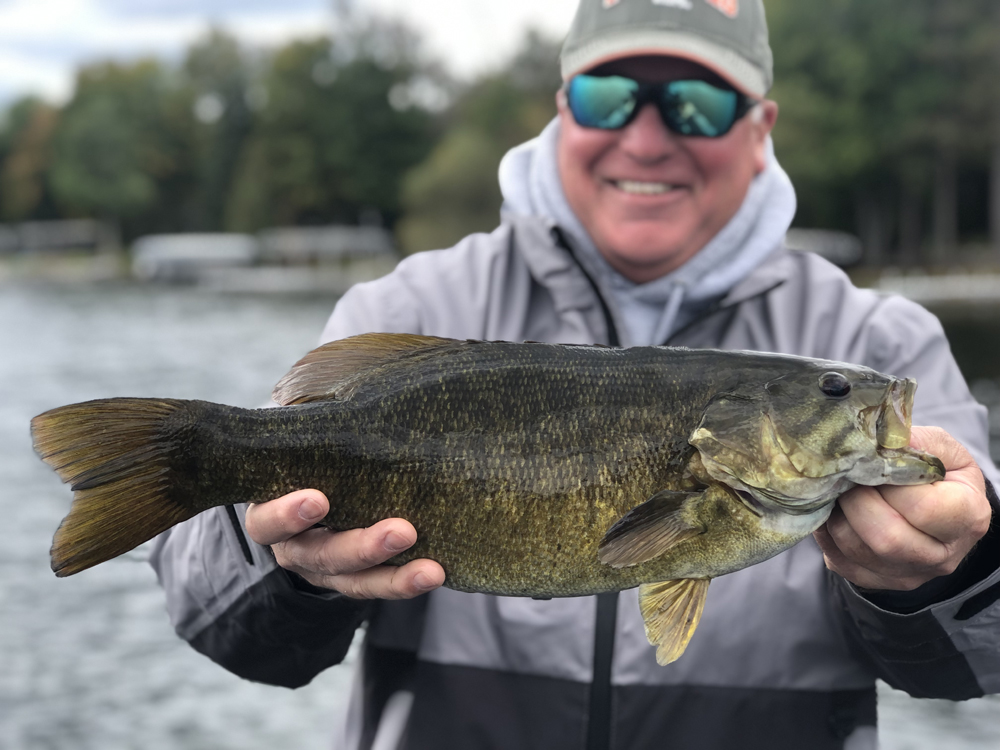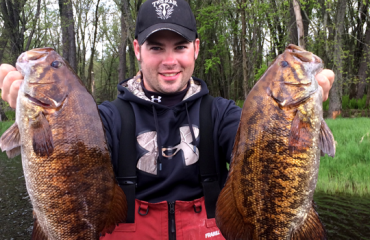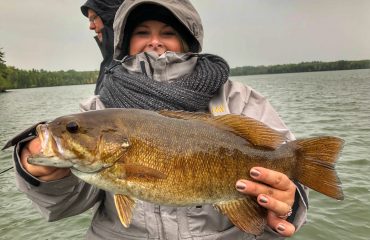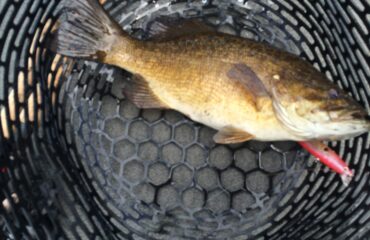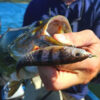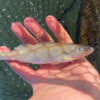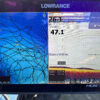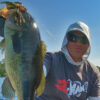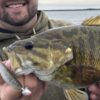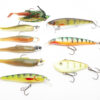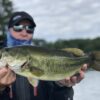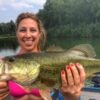September is My Favorite Smallmouth Month
September is a month of transition and changing of seasons. With shortening daylight and colder nights, the entire food chain reacts and acclimates to these changes. On many clear water fisheries with sand bottom composition, trophy smallmouth return the shallows where they are most comfortable in cooling waters, and roam sand beaches.
From late August through September smallmouth and many other gamefish species are on the move, searching for food and temporarily taking up residence in new habitats. By nature, large adult smallmouth are cool water species, favoring water temperatures ranging from 60 to 70 degrees. Weeks prior, most of the lake’s population was likely roaming open water or living comfortably in these same temperatures offshore on deep structure. As the first cool downs of autumn arrive, the shallows react first, immediately becoming the most comfortable water temperature range and locations of the lake to smallmouth, muskies, northern pike, and several other species.
This time of year we find many of our biggest bass prowling in wolf packs along large sand flats, inside weedlines, and sand beaches in depths of 6 ft. and less. The shallow sand pattern is driven by cooling weather and less sunlight, and most influenced by the comforts of cooling water temperatures and their high oxygen content. Inevitably as September progresses and as temperatures cool to 60 and lakes are in pre-turnover stage, you’ll encounter more smallmouth invading the shallows, roaming the flats, and chasing large schools of yellow perch that are unsuspecting of this predator’s whereabouts.
Coincidentally, a shallow water migration of baitfish and forage species is occurring simultaneously. On many premier inland smallmouth fisheries, young of year yellow perch are most abundant and common. In areas of high concentration, dozens of them will often trail lures to boat side. Little do they realize they are a major reason why big smallmouths are in these locations in September.
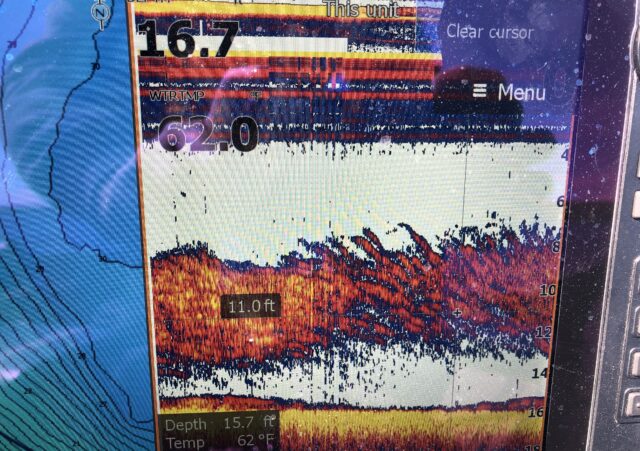
Life’s a Beach
Sand is a major fish attractor on northern lakes. Northern shores with exposure to southern skies tend be geographically best due to their solar heat absorption. Locating sand is timely and done easily by browsing satellite imagery of your favorite lakes on Google aerial maps. Most lakes throughout Wisconsin, Minnesota, and Northern Michigan are displayed in high definition detail, and their very clear waters will visibly show sand shorelines and underwater terrain. DNR maps with bottom recordings can also help confirm the presence of sand too.
Locating sand shorelines by boat is time consuming. Visually the best indicator of it is natural sand shorelines and beaches, and reeds. Seek flats that have some depth fluctuation, grass patches, and nearby deeper weed edges. Troughs and slight depth differences of as little as 1 to 2 ft. are just enough to be bass magnets in the shallows. These are scour holes formed by several years of ice forces and drifts. The best flats will be covered with patches of low-rising grass and other vegetation along bottom, which ultimately attracts the perch forage.
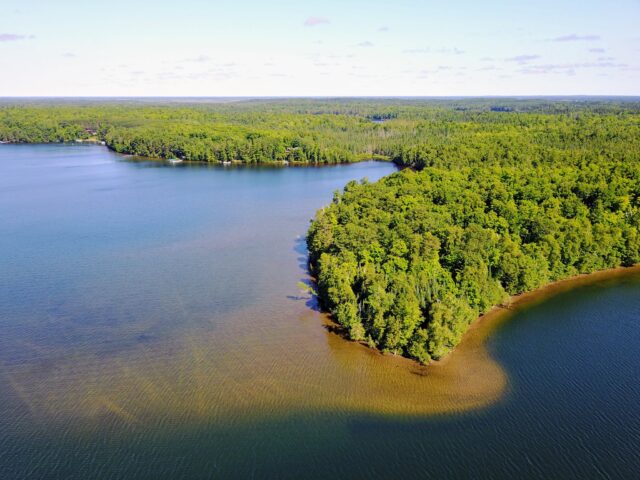
Shallow sand is attractive to late summer and early fall smallmouth. Fish seem to soak up solar energy that’s absorbed by the sand bottom, appearing to rejuvenate themselves energetically for the final feeding binges of the year before wintering and very slow metabolism begins a month later after turnover.
Wherever you will be fishing this month, acknowledge that smallmouth are opportunistic feeders, and predators who can creatively use their surroundings and habitats to help them ambush prey. On September sand, smallmouth will often lie along bottom and wait to torpedo themselves into passer-by schools of perch. With their incognito sandy-bronze color schemes that camouflage into bottom substrate, they are specialized feeders.
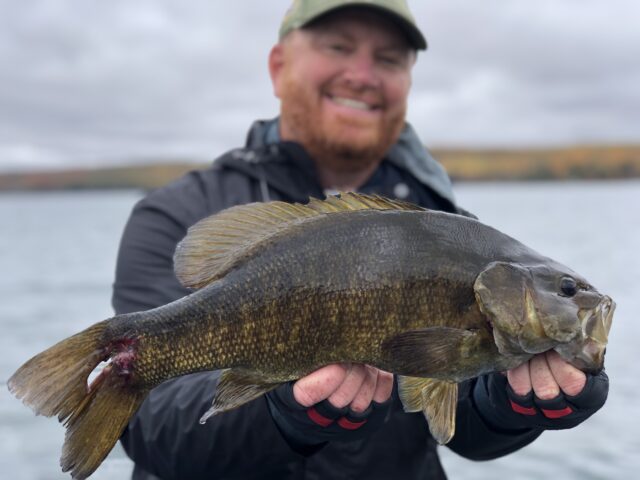
September sand is water temperature and migration driven. The bite peaks during the 3rd and 4th weeks of the month, and persists until the first week of October. Then the turnover cycle begins, erasing all the magical shallow water fishing that was experienced those previous few weeks.
This beach pattern frequently applies to many other gamefish species as well, especially muskies. They love sand in early fall. Chasing muskies across September sand also has led me to this newfound discovery with smallmouth, who will utilize the bottom substrate heavily themselves when their preferred forage species is homing on it too.
September encompasses a number of good days and bad days of weather, but the one constant is September sand. As smallmouth progress shallower, gently slide into these areas with them. When smallmouth return shallow in September, it’s often for water temperature comfort, and feeding on forage abundance. The potential for high numbers and catch rates, and trophy smallmouth is inevitable in what could end up being the best trips of the year.
